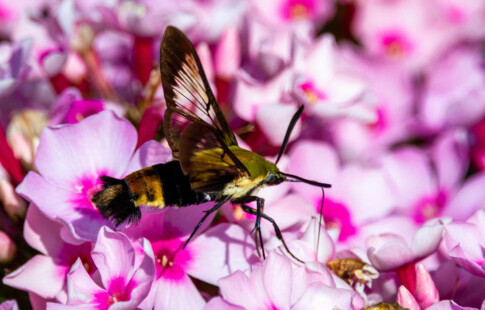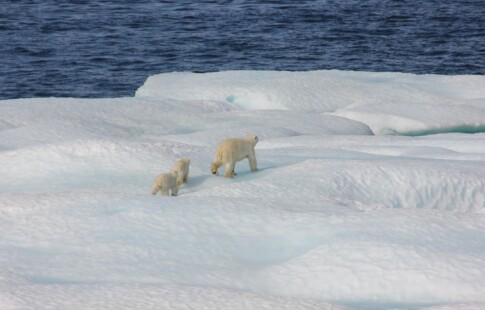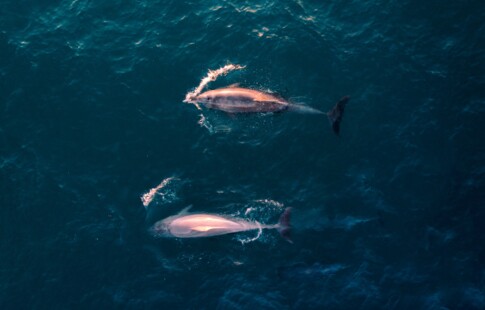
What Are the Longest Living Animals?
We are reader-supported. When you buy through links on our site, we may earn affiliate commission.
Humans live a pretty long time — estimates for human lifespans generally fall between 70 and 80 years — but humans don’t even come close to outliving some of the planet’s oldest creatures. For some animal species, living past 100 is the norm, not the exception. Some scientists even think other species can teach humans a thing or two about aging well.
Studying earth’s longest living animals benefits people for a myriad of reasons. It can allow us to understand the biological aging process better, discover conditions that make for long lifespans and even understand how to protect our planetary elders. In addition to practical reasons, though, humans are fascinated by old animals because they represent the Earth’s past. It’s amazing to think that some animals alive today have been around since before the United States became a country.
Some of the planet’s oldest animals have endured changing climate conditions, predators and disease. They remind us that the results of our actions today can affect the environment not just now but for years and years to come.
There are plenty of reasons the world’s longest living animals deserve admiration. So let’s take a look at who some of these animals are and how they do it — put on your party hats because we have a lot of birthdays to celebrate.
Bowhead Whale, Balaena mysticetus
Native to the chilly waters of the Arctic, this whale species can grow up to 60 feet long and live for longer than 200 years. Scientists apparently discovered the Bowhead’s longevity after finding an old spearhead lodged in one whale’s blubber. Further tests on the whales’ eye tissue revealed that Bowheads can, in fact, live for more than two centuries.
The Bowhead Whale’s capacity for a long life could be related to its cold habitat. The whale’s cold environment could lead to low body temperature, which can cause slower metabolism and less tissue damage. A slower metabolism is one of several physiological traits that promote long life.
Galapagos Tortoise, Chelonoidis nigra
Slow and steady wins the race, right? The giant tortoises famously visited by Charles Darwin win their races by outliving the competition. These tortoises can live more than 100 years in the wild, and one tortoise named Harriet died in 2006 at the age of 175. These slow-moving creatures also have slow metabolisms and internal water storage that allow them to survive up to a year without eating or drinking.
Unfortunately, these tortoises are somewhat endangered as a result of past hunting and the introduction of non-native species such as cats, cattle and feral pigs to their island home. Though they live long lives, Galapagos tortoises suffer the effects of human expansion and population growth just like other species do.
Ocean Quahog, Arctica islandica
Ocean quahog are bivalve clams native to the North Atlantic. Scientists can approximate the age of these clams by examining the rings on their shells like they might tree rings. These clams commonly live more than 100 years and some specimens found were more than 400 years old. Believe it or not, people often harvest these ancient clams for food.
Some research suggests that ocean quahog might live so long due to their increased resistance to oxidative stress, which wears on cells and leads to reduced cellular function over time.
Tuatara, Sphenodon punctatus
The New Zealand tuatara is probably the closest thing you’ll find today to a living dinosaur. These lizard-like creatures are the last living members of the order Rhynchocephalia. The other members of this order went extinct around 60 million years ago.
Tuataras can live upwards of 100 years. One tuatara living in captivity, for example, became a first-time father at age 111. Unfortunately, the tuatara is endangered and threatened by predators and habitat loss.
The Immortal Jellyfish, Turritopsis dohrnii
Finally, the animal species with perhaps the longest possible lifespan is this so-called immortal jellyfish. When under stress from the environment, members of this species can revert back to earlier life stages, allowing them to grow and mature once more to repair the damage. Though these jellyfish can still die from predators and other dangers, they are technically immortal, as they could potentially cycle through life stages indefinitely.
Scientists don’t yet understand how the immortal jellyfish is able to undergo this process. However, studying it could greatly benefit human medical research in the future.
Sharing the Earth
Humans share the earth with some incredible animals, including some that are incredibly old. The more we understand about these creatures, the better we can protect them and ourselves from danger. Hopefully, with a little work from conservationists, these species will stay with us for even more years to come.
Share on
Like what you read? Join other Environment.co readers!
Get the latest updates on our planet by subscribing to the Environment.co newsletter!
About the author
Jane Marsh
Starting from an early age, Jane Marsh loved all animals and became a budding environmentalist. Now, Jane works as the Editor-in-Chief of Environment.co where she covers topics related to climate policy, renewable energy, the food industry, and more.





